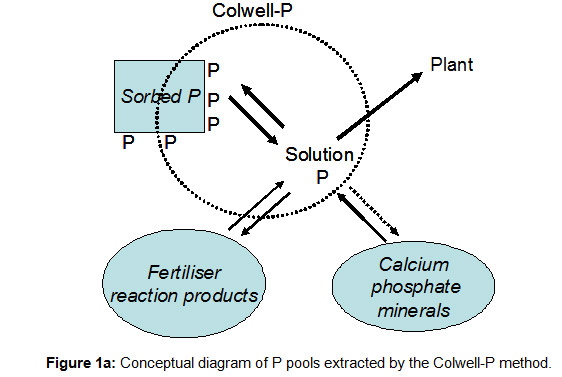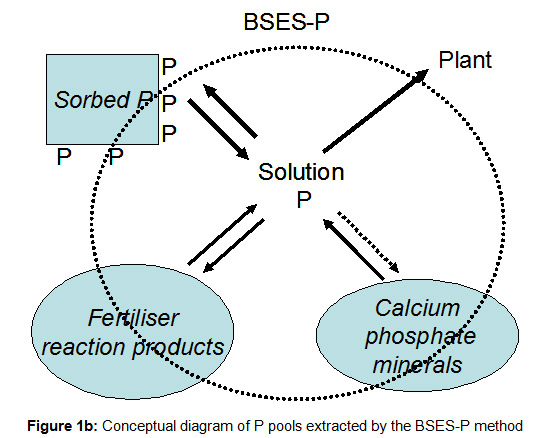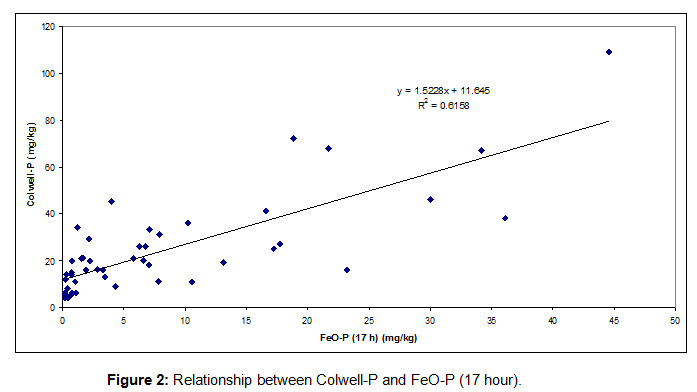TOWARD A BETTER P NUTRITION PACKAGE: IMPLICATIONS OF CROP DEMAND PATTERN AND ZONE OF ROOT ACTIVITY ON DIAGNOSTIC SOIL P TESTING
| Date: 21 Sep 2010

Crop P demand pattern and zone of root activity
In the rain-fed wheat growth model of Fischer (1979), two periods of carbohydrate (and nutrient) accumulation are proposed- pre-anthesis and post-anthesis. The model suggests that kernel number (i.e. yield potential) is set by water (and nutrient) availability in the pre-anthesis period while actual yield is determined by post-anthesis water (and nutrient) availability. In project DAQ00084, modelling of plant available water in the northern grain region during the growing season using long term weather data indicated that the 0-15 cm soil layer was drier than the lower limit for 14-51% of the post-anthesis sorghum period and 17-65% of the post-anthesis wheat period. Similar regional variability was evident in the pre-anthesis period for both crop seasons, but soil moisture status was higher. These results indicate that, following establishment, the crop is likely to be dependent on soil water reserves below 10 cm for a substantial proportion of the growing season. Because the subsoil will be the zone of root activity, it will also be the zone for nutrient acquisition. This observation is supported by soil P data from a Vertosol at Colonsay in south-eastern Queensland following prolonged rain-fed cropping (Wang et al. 2007). Without P fertiliser addition, continuous cropping caused a decline of 55%, 35% and 10% in total P from the 0-10, 10-30 and 30-60 cm layers respectively, compared to an uncropped reference soil.
Pre- and post-anthesis P availability
Phosphorus is transported to the root system by diffusion and the amount of P arriving at the root surface is primarily determined by the effective diffusion coefficient (which is dependent on soil properties) and the concentration gradient. Because of the limited root surface area available for P uptake during crop establishment, it can be inferred that adequate P uptake will be very much dependent on maintaining a high solution P concentration and a high quantity of readily desorbable P (to buffer the soil solution P concentration) in the surface (0-10 cm) soil.
However, as the growing season progresses and the crop becomes reliant on stored subsoil water for growth, P will be acquired from deeper in the soil (10-30 cm). Because the root surface area for P absorption is much greater, than during establishment, it is likely that the dynamics of soil P supply will be less dependent on immediately available P and that slowly available P sourced from sparingly soluble soil minerals [such as apatites (calcium phosphates)] and fertiliser reaction products becomes more important. At the Colonsay site mentioned above, Wang et al. (2007) found that the greatest decrease in soil P in the 10-30 cm soil layer due to cropping occurred in the M HCl extractable soil P fraction, not the bicarbonate extractable fraction. Diagnostic soil tests for assessing soil P status will therefore need to reflect immediately available P in the surface soil pre-anthesis and slowly available P in the subsoil post-anthesis.
Appropriate soil P tests
Figures 1a and 1b conceptually indicate soil P pools and the relative efficiency of Colwell-P (0.5 M sodium bicarbonate) and BSES-P (0.005 M sulphuric acid) for extracting P from these pools.

Previous work has shown that an index calculated as (Colwell-P/PBI) is highly correlated with immediately available P across a wide range of Queensland soils. However, because the PBI of black and grey cracking clay soils in the northern grain region is generally moderate and does not vary greatly (mean PBIs for different areas of the northern grain region range from about 130 to 150 except for the very low mean value of about 20 for the Western Downs), Colwell-P alone probably provides a reasonable indication of P availability for crop establishment in these soils.
To test the applicability of these conceptual models, iron-oxide coated strips were used as a ‘sink’ to continuously adsorb P from the soil solution. P adsorbed by the strips during a 17 hour shake was assumed to be equivalent to ‘immediately available’ P (solution P plus readily desorbable P) while cumulative P adsorbed by a succession of strips over a period of several days was used as an index of ‘slowly available’ P (solution P plus readily desorbable P plus P dissolved from calcium phosphate minerals and fertiliser reaction products). These two P pools were determined on a suite of 48 soils from the northern grain region.
There was a significant, but weak, correlation (r=0.75; P<0.05) between the immediately- and slowly- available P pools as determined by the FeO strips. Colwell-P was not significantly correlated with BSES-P (r=0.09; ns) and it is apparent that these two soil P tests are measuring different soil P pools in these clays.
Colwell-P was highly correlated with the immediately-available P (Fig. 2), being much more so than BSES-P (r= 0.54; P<0.001). However, BSES-P was highly correlated with slowly-available P (Fig. 3) whereas the correlation with Colwell-P was much poorer (r=0.31; P<0.05).


These results suggest that Colwell-P is probably a good indicator of P availability in the surface soil during crop establishment (and therefore useful to diagnose the need for starter P) whereas BSES-P is probably a better indicator of subsoil P reserves that are accessed by the crop later in the growing season. Verification of these conclusions is currently being undertaken by correlating short and long term plant P uptake in bioassay experiments with soil P tests.
References
Fischer RA (1979) Growth and water limitation to dryland wheat yield in Australia: a physiological framework. Journal of the Australian Institute of Agricultural Science 45, 83-94.
Wang X, Lester DW, Guppy CN, Lockwood PV, Tang C (2007) Changes in phosphorus fractions at various soil depths following long-term P fertiliser application on a Black Vertosol from south-eastern Queensland. Australian Journal of Soil Research 45, 524-532.
Contact details
Phil Moody
DERM
Block B, 80 Meiers Rd, Indooroopilly 4068
Ph: 07 3896 9494
Fax: 02 3896 9623
phil.moody@derm.qld.gov.au
GRDC Project Code: DAQ00148 Agronomy an,
Was this page helpful?
YOUR FEEDBACK
